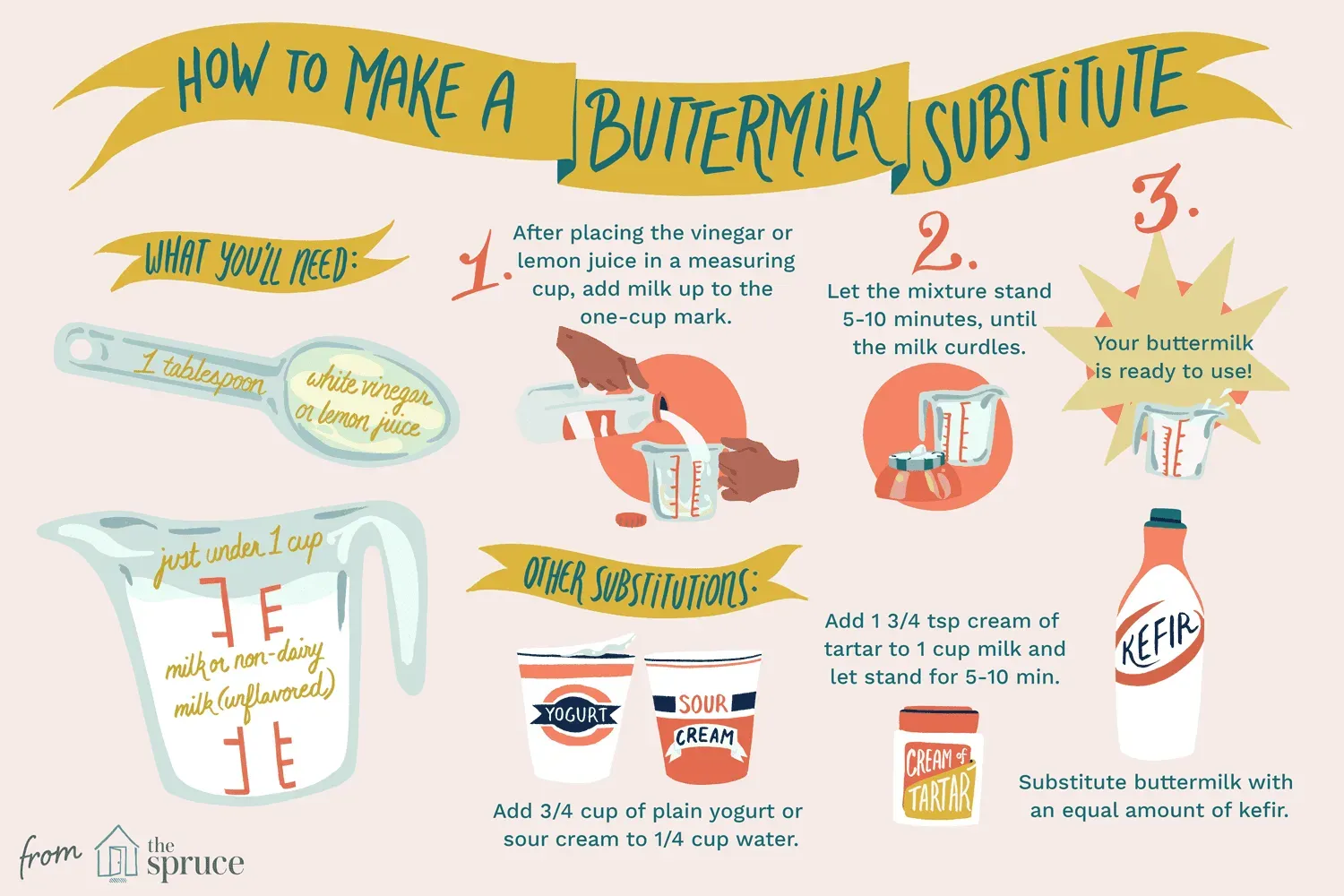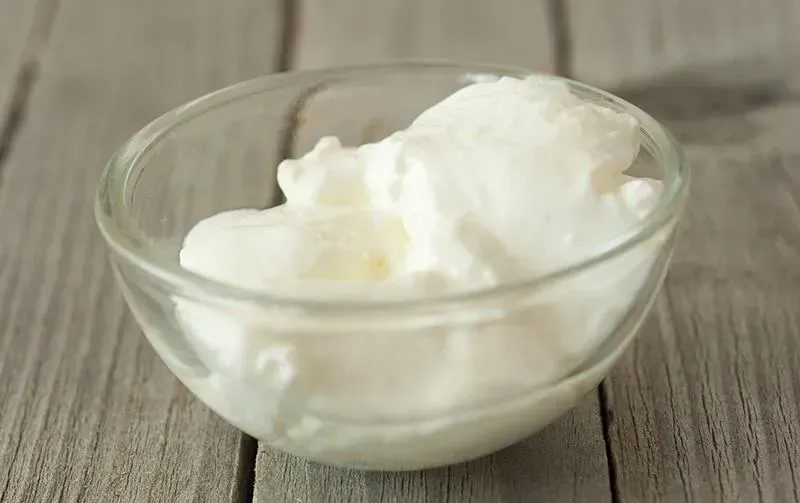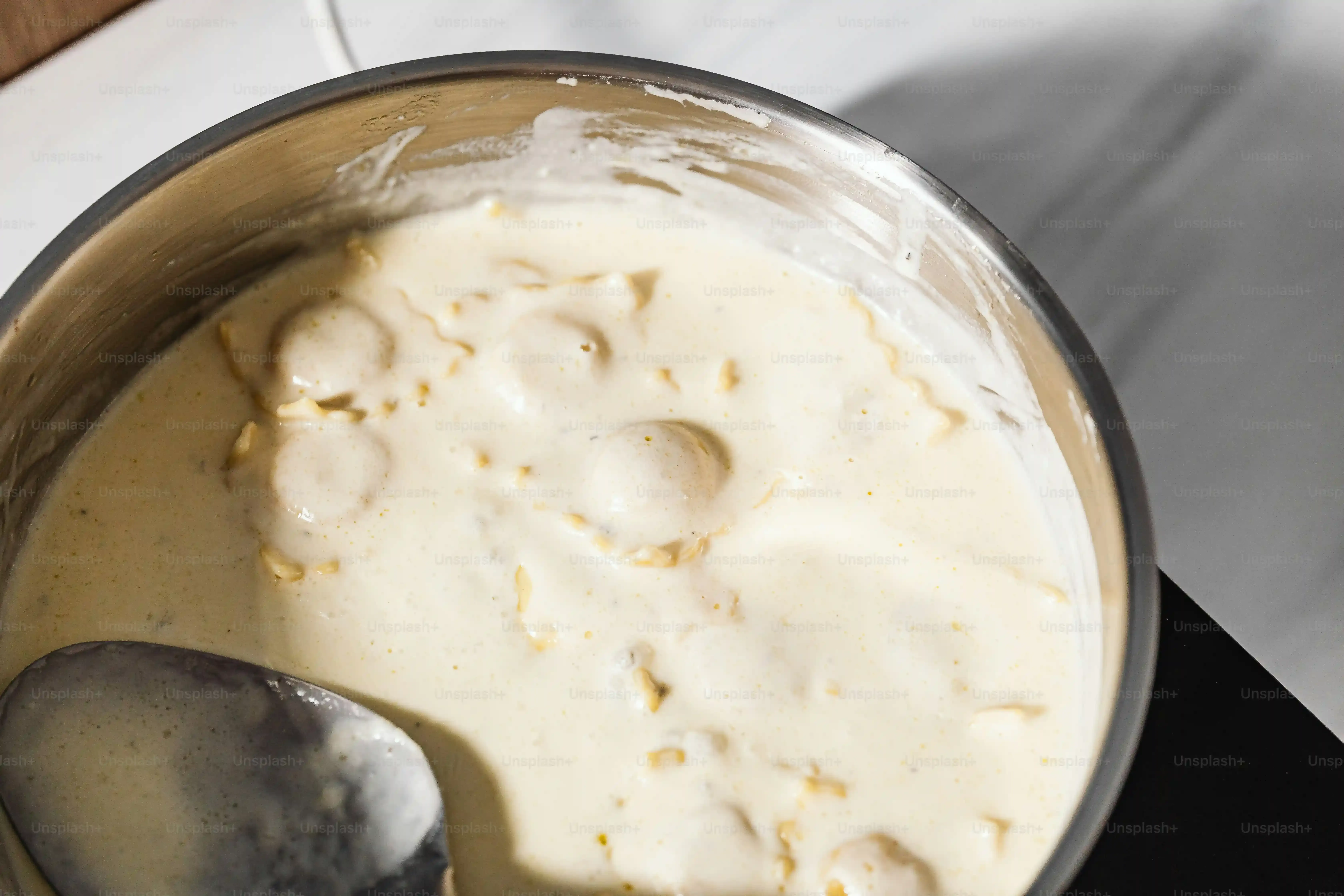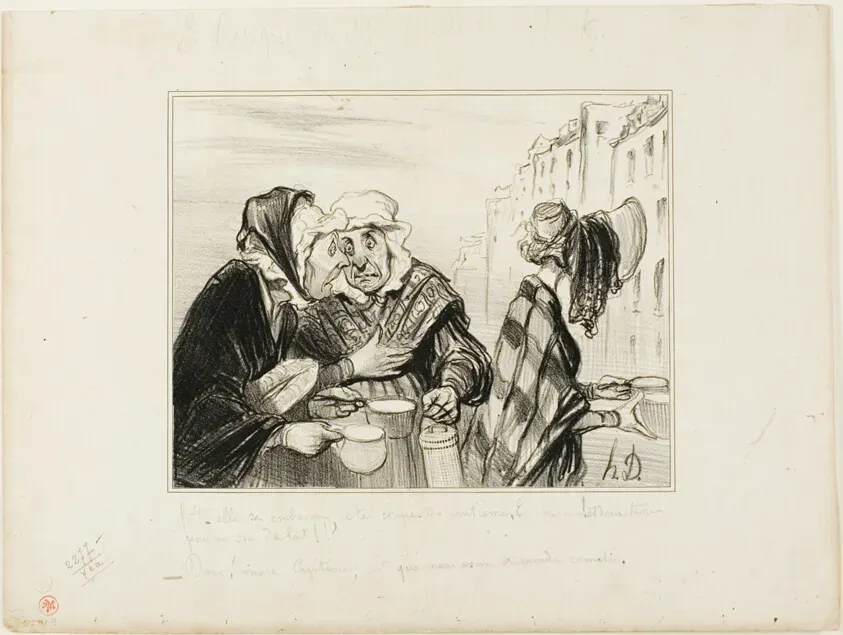Table of Contents
You’re halfway through mixing up a batch of pancakes, or maybe a killer fried chicken marinade, and then it hits you: no buttermilk. The recipe calls for it, the fridge is bare, and the store feels miles away. It’s a common kitchen predicament, one that can derail your cooking plans fast. Before you abandon ship or make a desperate dash to the grocery store, consider a simple, effective workaround using something you might already have on hand. This guide cuts straight to the chase, showing you exactly how to make buttermilk with sour cream, turning a potential recipe disaster into a minor inconvenience.
Why Make Buttermilk with Sour Cream?

Why Make Buttermilk with Sour Cream?
The Fridge is Empty, and Dinner Waits for No One
Picture this: you're wrist-deep in flour, about to mix that perfect batch of biscuits or dredge chicken for frying, and the recipe calls for buttermilk. You swing open the fridge door, scan the shelves, and... nothing. Just a lonely carton of milk and maybe some forgotten yogurt. This is precisely Why Make Buttermilk with Sour Cream becomes your kitchen superpower. It's the ultimate emergency substitute, pulling you back from the brink of a recipe fail without a last-minute trip to the store. Convenience is king when you're mid-cook, and this trick delivers.
Beyond the Emergency: Functionality in Your Food
It's not just about saving a trip; the sour cream substitute actually *works* in recipes. Buttermilk isn't just tangy liquid; its acidity reacts with baking soda and baking powder, providing lift and tenderness in baked goods. It also helps break down proteins, which is why it's a go-to for marinades, especially for chicken. Using sour cream, which is also acidic and has a similar cultured tang, mimics these essential functions. You get that desired lift in your muffins and that tender bite in your fried chicken, even without the real stuff.
- Quick fix for common recipes (pancakes, biscuits, marinades).
- Provides necessary acidity for leavening agents like baking soda.
- Contributes to tenderness in baked goods and marinades.
- Utilizes an ingredient often already in the fridge.
Texture, Taste, and Why It's a Good Stand-In
While not identical, the texture and taste of the sour cream substitute are remarkably close for most applications. Buttermilk has a thick, slightly viscous consistency and a distinct sour tang. Sour cream, thinned with milk, gets you pretty close to that viscosity. The fermentation process that gives sour cream its tang also provides the necessary acidity. It's not an exact clone, sure, but in the context of a batter or marinade mixed with other ingredients, the subtle differences are usually negligible. It provides the acid and some of the richness needed to get the job done effectively.
Ingredients You Need: Sour Cream and Milk

Ingredients You Need: Sour Cream and Milk
The Star Player: Sour Cream
Alright, let's get down to the nitty-gritty of how to make buttermilk with sour cream. You need, well, sour cream. Seems obvious, right? But not just any sour cream will do if you want the best results. Go for full-fat sour cream if possible. The richness helps mimic the body of real buttermilk. Avoid the low-fat or fat-free versions for this particular trick; they tend to be thinner and might not give you the same consistency or mouthfeel in your final dish. Think of it as laying the foundation – you want a solid base.
The Supporting Cast: Milk
Next up in our "Ingredients You Need: Sour Cream and Milk" duo is, you guessed it, milk. This is where you thin out the thick sour cream to get it closer to a pourable buttermilk consistency. Any type of milk will work here – whole milk, 2%, even skim. The fat content of the milk is less critical than the fat content of the sour cream because you're primarily using the milk to adjust the viscosity. Just grab whatever you have in the fridge. No need to buy a special carton just for this.
- Full-fat sour cream is recommended for best texture.
- Any milk type works for thinning.
- Ratio is key for consistency (more on that soon).
- Ensure both ingredients are reasonably fresh.
Getting the Ratio Right
Making buttermilk with sour cream isn't rocket science, but the ratio matters. A good starting point is usually about 1/4 cup of sour cream mixed with 3/4 cup of milk to yield roughly 1 cup of buttermilk substitute. Whisk them together until smooth. You're aiming for something thicker than regular milk but thinner than pure sour cream – think pancake batter consistency, maybe a little thinner. If it's too thick, add a splash more milk. If it seems too thin, well, you probably added too much milk initially, and there's not much fixing that without adding more sour cream, which defeats the purpose of using what you have. Practice makes perfect here, but the 1:3 ratio is a reliable starting point for your Ingredients You Need: Sour Cream and Milk mixture.
Simple Steps: How to Make Buttermilk with Sour Cream

Simple Steps: How to Make Buttermilk with Sour Cream
Measure Your Players
Alright, let's actually do this. The first step in these Simple Steps: How to Make Buttermilk with Sour Cream is getting your measurements right. Remember that rough 1:3 ratio we talked about? That's your starting point. If your recipe calls for 1 cup of buttermilk, you'll need about 1/4 cup of sour cream and 3/4 cup of milk. Grab your measuring cups. Spoon the sour cream into the 1/4 cup measure, leveling it off. Then, pour the milk into the 3/4 cup measure. Don't stress if it's not surgically precise; we're making a substitute, not performing open-heart surgery. Just aim for those proportions.
Combine and Conquer
Now for the exciting part: putting them together. Get a bowl or a jar – something you can easily whisk or stir in. Add the measured sour cream to the container. Pour the milk in right on top. Now, grab a whisk or a fork. Start stirring or whisking vigorously. You want to break up any lumps of sour cream and fully incorporate it into the milk. Keep going until the mixture looks smooth and uniform, with no streaks of pure sour cream or thin milk. It should have a slightly thicker, creamy appearance.
- Use a whisk or fork for mixing.
- Combine sour cream and milk in a bowl or jar.
- Mix until completely smooth and uniform.
- Ensure no lumps of sour cream remain.
Let it Mingle (Briefly)
Once you've got your smooth mixture, give it a minute. Literally, one to five minutes. This isn't strictly necessary for the chemical reaction (the acid is already there), but it helps the texture equalize a bit more and ensures everything is fully integrated. While it sits, take a look. Does it look roughly like buttermilk? It should be thicker than milk, but pourable. If it seems too thick for your liking or for the recipe's needs, add another tablespoon or two of milk and whisk again. If it's too thin... well, you're probably stuck with it, so just use it and adjust next time. Your homemade buttermilk with sour cream is now ready for action.
Tips for Perfecting Your Homemade Buttermilk

Tips for Perfecting Your Homemade Buttermilk
Refining Your Ratio and Temperature
So you've mixed your sour cream and milk. Great start! But getting truly reliable results when you how to make buttermilk with sour cream goes beyond just dumping ingredients together. One of the bestTips for Perfecting Your Homemade Buttermilkinvolves paying attention to temperature and dialing in your ratio. Cold sour cream straight from the fridge is a pain to whisk smoothly into milk. Let it sit on the counter for 15-20 minutes before mixing; slightly softened sour cream incorporates much more easily, giving you a smoother, more uniform texture right from the start. Also, while the 1:3 ratio is a solid baseline, don't be afraid to tweak it slightly based on the specific sour cream and milk you're using, or the desired thickness for your recipe. A little experimentation here pays off.
- Use room temperature sour cream for easier mixing.
- Adjust the milk amount slightly for desired thickness.
- Whisk thoroughly to avoid lumps.
- Let it rest briefly after mixing.
- Taste a tiny bit – does the tang feel right?
Using Your Sour Cream Buttermilk Substitute

Using Your Sour Cream Buttermilk Substitute
Where This Substitute Shines Brightly
Alright, you've successfully figured out how to make buttermilk with sour cream. Now what? Where does this homemade concoction truly earn its keep? Mostly, it excels in situations where buttermilk's primary job is chemical rather than flavor-forward. Think baking. Pancakes, muffins, quick breads – anything that uses baking soda or powder relies on an acid to react and create lift. Your sour cream-based buttermilk substitute brings that acid to the party, ensuring your baked goods rise properly and have that tender crumb.
It's also a winner in marinades. Buttermilk is famous for tenderizing chicken and other meats without making them tough, thanks to its mild acidity and enzymes. Drenching chicken pieces in this substitute before frying or baking helps break down those muscle fibers just like the real deal, leading to juicier results. It might not impart the *exact* same subtle tang as cultured buttermilk, but for functionality? It gets the job done with minimal fuss.
- Pancakes and Waffles: Fluffy texture relies on acid reaction.
- Biscuits and Scones: Helps achieve a light, tender crumb.
- Quick Breads and Muffins: Provides necessary lift with leavening.
- Chicken Marinades: Tenderizes meat effectively.
- Dressings (simple vinaigrettes): Adds tang and slight creaminess.
Situations Where You Might Notice a Difference
Now, let's be real. While your homemade buttermilk with sour cream is a fantastic stand-in, it's not an identical twin. There are times you might notice it's a substitute. If a recipe features buttermilk as a star flavor – say, a classic buttermilk ranch dressing where that distinct tang is front and center, or a simple buttermilk bread where the flavor isn't masked by other ingredients – you might detect a slight difference. Sour cream has its own flavor profile, and while similar, it's not precisely the same as cultured buttermilk.
Also, the texture, while adjustable, might not be *exactly* the same viscosity as store-bought buttermilk, which can vary itself. For most standard recipes, this is a non-issue. But if you're working on something hyper-sensitive to liquid volume or texture, like a very delicate pastry dough or a specific sauce, be aware that subtle variations might occur. For 90% of your cooking needs, though? This trick is a lifesaver and performs admirably. Don't let the perfect be the enemy of the good, especially when hunger is calling.
Your Buttermilk Problem Solved
So there you have it. That kitchen crisis averted, simply by knowing how to make buttermilk with sour cream. It’s not rocket science, just a practical swap using common ingredients you might already have chilling in your fridge. This trick won't replace commercial buttermilk in every single scenario, but for baking, marinades, and dressings, it holds up remarkably well. Keep this simple method in your back pocket, and you'll find yourself less stressed when a recipe calls for that tangy liquid and you're fresh out. It's a small bit of kitchen know-how that actually pays off.